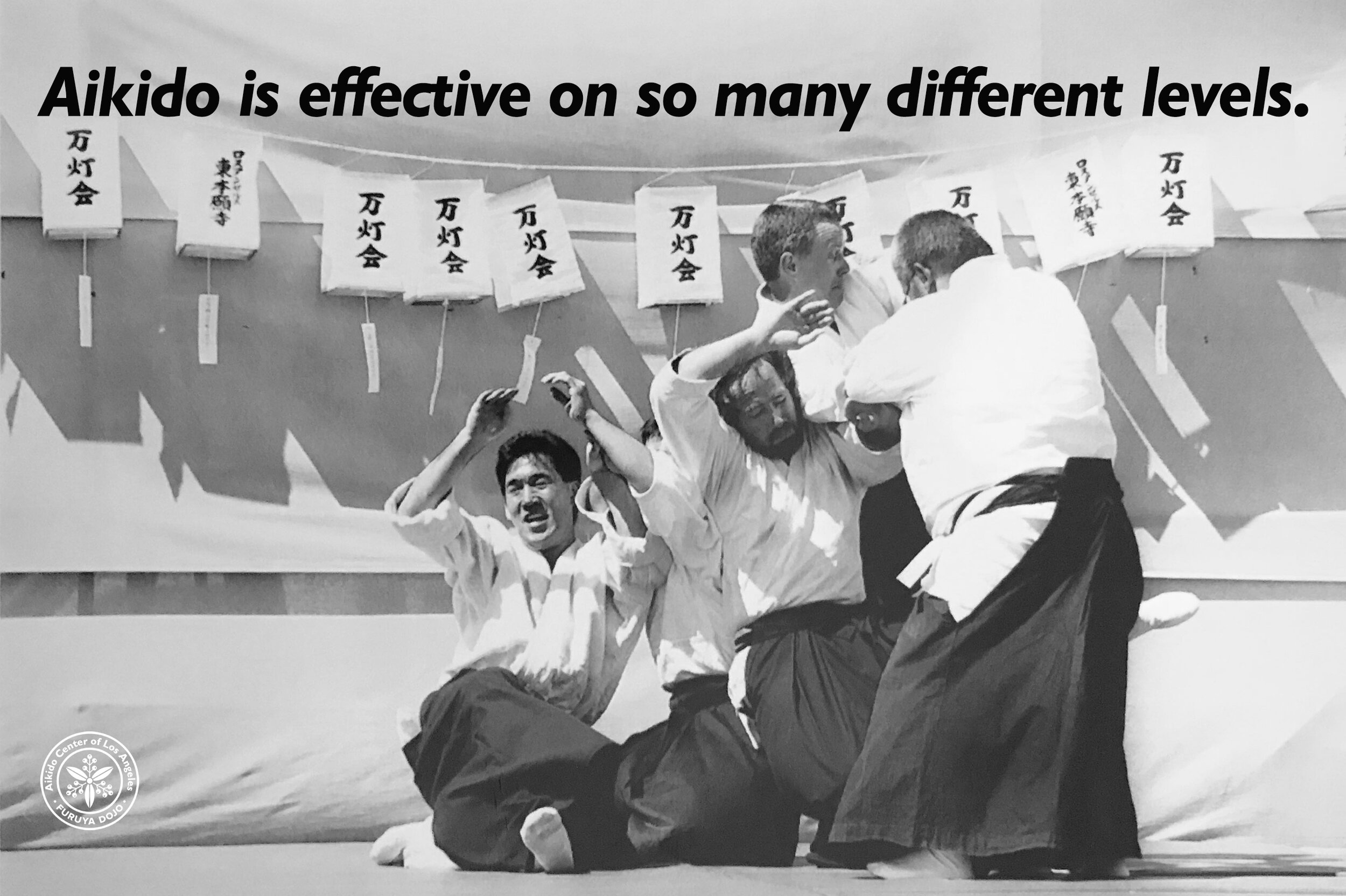What is Aikido?
Aikido stands as an art form that transcends physicality. It imparts a way of life that nourishes the spirit, sharpens the mind, and strengthens the body.
Aikido stands as an art form that transcends physicality. It imparts a way of life that nourishes the spirit, sharpens the mind, and strengthens the body.

Aikido, a Japanese martial art, is not merely about physical confrontation or battling opponents.
Instead, it is an embodiment of spiritual and philosophical beliefs, translated into graceful, flowing movements and techniques.

The foundations of Aikido were laid by Morihei Ueshiba (1883-1969), a man profoundly influenced by martial arts, philosophy, and religion.
Ueshiba, also known as O-Sensei, was deeply engrossed in the study of various martial arts, including Daito-ryu Aiki-jujutsu, Kenjutsu (sword fighting), and Jojutsu (short staff fighting).
However, it was his spiritual enlightenment, largely shaped by the Omoto-kyo religion, which led to the birth of Aikido.
Ueshiba envisioned a form of martial art that emphasized harmony and love rather than conflict and harm.
He established Aikido in the early 20th century, incorporating martial techniques with philosophical and spiritual principles.

Aikido, when translated, means "the way of harmony with the spirit." It embodies the philosophy of avoiding confrontation and aggression.
The objective of Aikido is not to defeat an adversary but to neutralize aggression, redirect it, and promote peaceful resolution.
The martial art fosters the principle of non-resistance. Instead of opposing force with force, Aikido teaches practitioners, known as aikidokas, to blend with and redirect the momentum of the attacker to neutralize the threat.
This perspective of conflict resolution extends beyond the dojo, promoting a peaceful approach in the face of life's adversities.
Aikido's techniques are diverse and dynamic. They can involve throws, joint locks, strikes, and body movements that utilize an opponent's energy against them.
The key is in mastering the timing and movement to blend with the attacker's force and then redirect it.
One of the signature aspects of Aikido is the concept of "Taisabaki," or body movement.
Rather than directly blocking an attack, an aikidoka learns to move their body in such a way as to evade the attack and position themselves advantageously.
The motion is often circular, creating a flow that's distinctive to Aikido.
Additionally, weapon training using a bokken (wooden sword), jo (staff), and tanto (knife) is a crucial part of Aikido, not for offense, but to understand the movements and dynamics of these weapons to defend against them effectively.

Today, Aikido is practiced worldwide by people of all ages and walks of life. Different schools and styles of Aikido have developed over the years, each with their unique emphasis.
Some focus on the spiritual aspects, others on the traditional martial techniques, while others integrate modern approaches to self-defense.
Despite the variations, the core philosophy of peaceful resolution and harmony remains consistent across all forms of Aikido.
It continues to be a martial art that doesn't merely train the body but also cultivates the mind and spirit, promoting a sense of peace, respect, and harmony both within oneself and with others.

From a self-defense standpoint, Aikido can be effective due to its focus on using an opponent's energy against them, and its range of techniques that can disable or control an attacker.
These include joint locks, throws, and pins that can neutralize aggressive actions without necessarily inflicting serious harm.
It's important to note that Aikido is not designed for quick incapacitation of opponents like some other martial arts, and it may not be as effective in situations where immediate, aggressive self-defense is needed.
It's also important to note that Aikido training often doesn't include aspects like resistance training, full contact sparring, or the unpredictability of real-world physical confrontations.
This can limit its practicality in real-world self-defense situations.
Practicing Aikido can lead to improved flexibility, balance, and body awareness, as well as fostering a sense of calm, mindfulness, and conflict resolution skills.
These elements can greatly benefit a practitioner in various aspects of life beyond physical combat.
Aikido stands as an art form that transcends physicality. It imparts a way of life that nourishes the spirit, sharpens the mind, and strengthens the body.
Its teachings offer guidance not just in martial techniques but also in navigating life's challenges and conflicts.
For those seeking a path that intertwines physical training, spiritual growth, and philosophical understanding, Aikido offers a holistic journey into the art of peace and harmony.
Your cart is currently empty.
Start Shopping